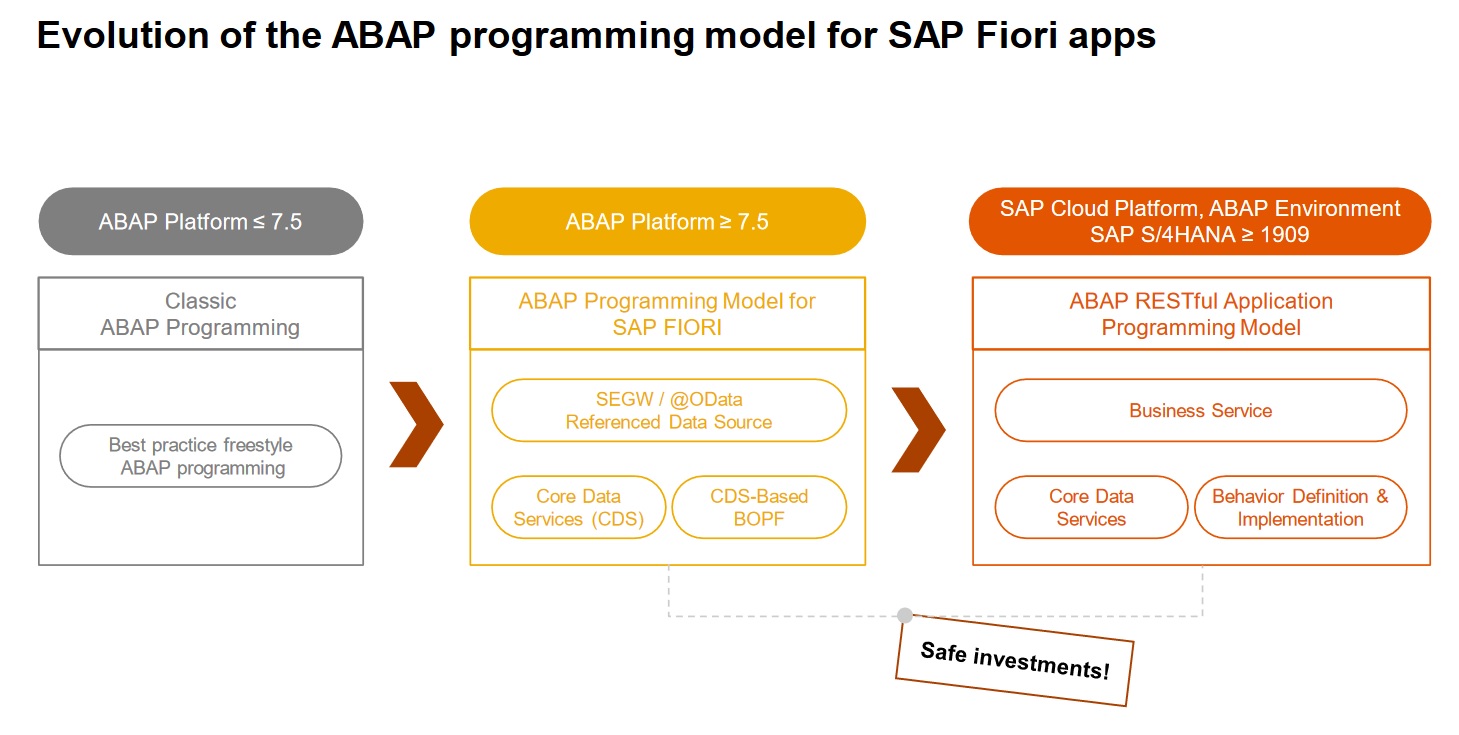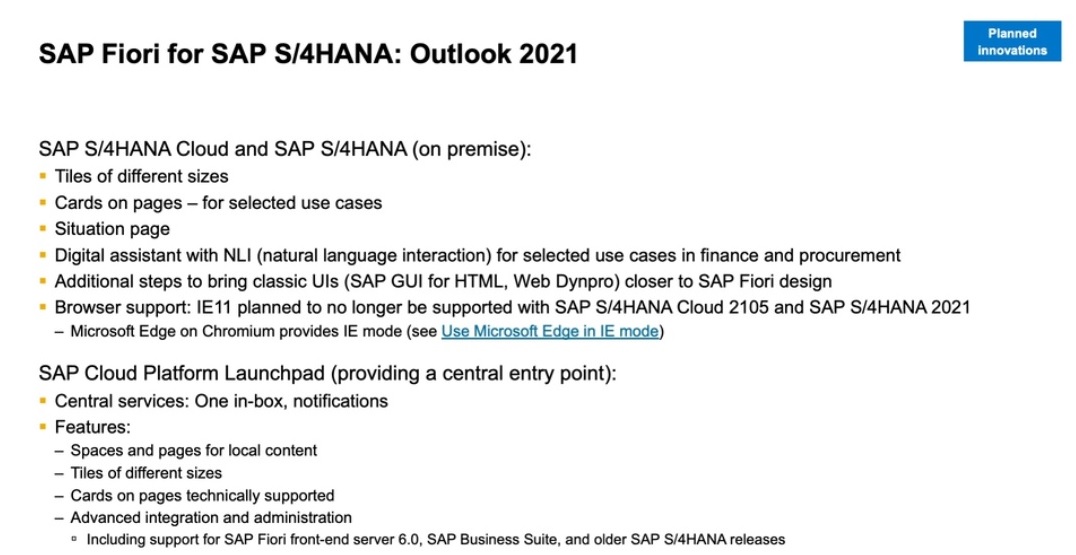SAP TechEd event closed the virtual doors December 10, after many hours of keynotes, learning sessions, hands-on workshops, and live discussions. SAP events are traditionally crammed with announcements and strategically outlined talking points (the official TechEd news guide is available here). In this post, I summarize the event learnings with regards to ABAP Development, User Experience, and Digital Transformation, as well as offer interpretation of some SAP announcements.
What is SAP Business Technology Platform?
Introduction of the SAP Business Technology Platform (BTP) in the TechEd keynote caused quite a bit of confusion. In social media posts, SAP BTP was quickly likened to SAP Leonardo, the portfolio name of yesteryears that received lukewarm reaction from the customers and eventually disappeared into the marketing mist.
Some attendees asked whether SAP BTP was the new name for SAP Cloud Platform (SAP CP). It is not. And SAP BTP is not a new product either. The best way I can describe it, SAP BTP is a strategic designation for the existing SAP platforms, including SAP CP. It seems to signify SAP’s commitment to providing unified platform solution that facilitates integration, among other things. While this is a positive strategic move, it remains to be seen what exactly this will mean for the SAP customers and partners in practice.
The Future of ABAP
Once again, SAP reaffirmed that ABAP remains part of its strategy. This includes ABAP RESTful Programming Model (RAP) and SAP Cloud Platform ABAP Environment (internally called Steampunk). ABAP RAP is available for on-premise customers starting with SAP S/4HANA 2020 and is a successor of the ABAP Fiori programming model, although the latter remains “safe investment”, per SAP.

Slide Source: SAP
These models introduce significant changes and even though ABAP may not be stepping out (yet?), it is stepping aside to share SAP development space with other languages and technologies. We have already seen Data Definition Language (DDL) in the CDS views, the vital part of ABAP programming model for Fiori. And custom Fiori app development requires some knowledge of UI5 and JavaScript.
The ABAP developers will need to transform into the SAP developers. For many (myself included), this journey has already begun, and others would be wise to join or risk to be left behind to work only with the legacy applications.
User Experience (UX)
This year, the UX related sessions were included in the Integrated Intelligent Suite (IIS) track. I believe it signifies that good user experience is no longer a novelty in SAP world and is becoming a part of the broader “enterprise experience”.
SAP Fiori 3 was already announced by SAP in 2019 (see this blog by Mindset’s Gavin Quinn for an overview). This year brought much welcome updates in SAP Fiori, such as the concept of multi-page spaces and situation handling features. The road map for 2021 looks exciting and includes Digital Assistant for selected use cases.

Slide Source: SAP
Other sessions in the IIS track included SAP Intelligent Robotic Process Automation (iRPA) capability demonstrations. It would be great to see more business use cases and detailed technical information for SAP practitioners. While RPA is an interesting subject with a lot of potential, its practical application and ROI is not quite clear yet. Hopefully, we will see more updates on this from SAP in 2021.
The customer sessions always add great value to the SAP events. This TechEd was no exception: in the session Yorkshire Water Uses SAP Fiori Elements to Build SAP Fiori Apps Quickly (IIS208) Mark Castle from Yorkshire Water shared how they have successfully implemented multiple apps using Fiori elements with minimal effort and specialized knowledge. It may seem rather unorthodox for a consultant to recommend the content that educates SAP customers on how to implement something without any consulting services. 🙂 But I feel that by sharing knowledge we achieve much more than by withholding it. Such transparency is what makes Mindset not just a service provider but a trusted advisor for our customers.
Transformation from SAP Business Suite to S/4HANA
This remains a hot topic for the SAP Business Suite (aka ECC) customers who are still contemplating their ERP strategy or are already preparing for transition. Several TechEd sessions covered the tools SAP provides for such projects, as well as the custom code migration aspects. The session Paths for Transitioning to SAP S/4HANA (DT100) offered a good overview of different options available to the existing SAP customers.
While technical information is now abundant, judging by the questions asked in the live chat, some customers are still struggling to make a business case for S/4HANA. One of the top upvoted questions during the keynote put it bluntly: “Why should customers be willing to pay for S/4HANA when they have invested hugely in ECC?” On this subject, I highly recommend openSAP course Guide Your SAP S/4HANA Project to Success. It provides information not only on the migration or re-implementation process but also highlights main functional capabilities of S/4HANA in different business aspects. With the end of maintenance date approaching for ECC; this decision for some customers might as well come down to being forced to upgrade for compliance reasons. But to get best value, I encourage SAP Business Suite customers to evaluate how S/4HANA can help them simplify their process and perhaps, offer a standard solution for something they had to build using custom ABAP before. SAP Community, user groups, and partners, such as Mindset, are available to help with this endeavor. Not all the questions have been answered, unfortunately, but in my opinion, it was a fascinating tool to gauge the attendee interest.
and Upskilling for SAP Professionals
The digital format allowed an unprecedented luxury this year. Any attendee could post any questions live during the TechEd keynotes and sessions. One of the top 3 upvoted questions during the first keynote was: “What is SAP doing to ensure that legacy experts – people who started with R3/ECC, can still play significant roles in the ever–changing SAP environment?”
If you are interested in viewing similar articles, visit our blog, here.
View our LinkedIn, here.